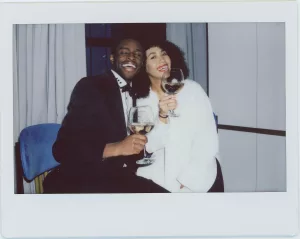Relationships are dynamic and multifaceted, requiring open communication, trust, and a willingness to navigate personal growth and exploration together. If your partner expresses an interest in exploring their bisexuality, it may introduce new and complex emotions for both of you. Whether you feel supportive, uncertain, or apprehensive, addressing this interest with empathy, curiosity, and honesty is key to maintaining a healthy and respectful connection.
This article provides a comprehensive guide for navigating conversations and decisions when your partner expresses an interest in exploring their bisexuality. It covers everything from understanding what bisexuality means, fostering open communication, managing emotions, and setting boundaries. The goal is to help couples approach this topic constructively, strengthening their relationship and honoring each other’s individuality.
Understanding Bisexuality and Personal Exploration
Bisexuality refers to the capacity to feel romantic or sexual attraction toward individuals of more than one gender. This identity exists on a spectrum and can mean different things to different people. For some, bisexuality might involve an attraction that is equally divided, while for others, it might lean toward one gender more than another.
Your partner’s desire to explore their bisexuality may be a reflection of their personal journey toward self-discovery and identity. It is important to recognize that this interest does not necessarily indicate dissatisfaction with the relationship but rather a need to better understand themselves. Supporting this process requires empathy, curiosity, and a willingness to separate your partner’s individual journey from the dynamics of your relationship.
Starting the Conversation
When your partner shares their interest in exploring their bisexuality, your initial response can set the tone for future discussions. This is a vulnerable moment for them, and how you react will likely shape how safe they feel to express themselves moving forward.
Approaching the topic with empathy demonstrates your commitment to understanding your partner’s feelings. Begin by acknowledging their courage in sharing something so personal. You might say: “Thank you for trusting me with this. I know it can’t have been easy to share.”
Asking open-ended questions, such as “What does exploring bisexuality mean to you?” or “How do you see this affecting our relationship?” invites your partner to elaborate on their thoughts and feelings. Listening without judgment or interruption shows that you respect their journey and are willing to engage in honest dialogue.
Managing Your Emotions
Hearing that your partner wants to explore their bisexuality can evoke a wide range of emotions. You might feel supportive, insecure, confused, or even hurt. These feelings are valid and deserve attention. Processing them in a healthy way allows you to respond thoughtfully and constructively.
Self-reflection is an essential first step. Ask yourself what specifically feels challenging about your partner’s interest. Are you worried about being replaced or that your relationship dynamics will change? Understanding your emotional triggers helps you communicate your concerns more effectively.
It may also be helpful to share your emotions with your partner in a way that avoids blame. For instance, instead of saying, “This makes me feel like I’m not enough for you,” try, “I’m feeling a little insecure, and I’d like to talk about how this might impact us.” Framing your feelings in this way encourages open discussion without placing unnecessary guilt on your partner.
If your emotions feel overwhelming, consider seeking support from a trusted friend, mentor, or therapist. Professional guidance can provide valuable tools for navigating this complex situation and processing your feelings constructively.
Setting Boundaries
Every relationship has unique dynamics, and exploring one partner’s bisexuality often requires reevaluating boundaries. Clear, respectful communication is crucial in setting boundaries that honor both partners’ needs and comfort levels.
Start by discussing what exploration means to your partner. Does it involve forming emotional connections with others, pursuing physical experiences, or something else entirely? Once you understand their perspective, share your own feelings and concerns about maintaining the integrity of your relationship.
Boundaries should reflect a balance between both partners’ needs. For example, you might agree on certain limits regarding communication, physical intimacy, or time spent with others. Reassure your partner that boundaries are not about control but about creating a framework where both of you feel safe and respected.
Regularly revisiting boundaries is essential, as feelings and circumstances may evolve over time. Checking in with each other ensures that both partners remain aligned and that adjustments can be made if necessary.
Building Trust and Reassurance
Trust is the foundation of any relationship, especially when navigating personal exploration. Demonstrating commitment and reassurance can help alleviate insecurities and strengthen your bond.
Expressing appreciation for your partner’s honesty is a powerful way to build trust. Let them know that you value their openness and that their identity is important to you. This can help them feel supported and reduce any fear of judgment.
Physical and emotional gestures can also reinforce trust. Spending quality time together, expressing affection, or revisiting shared memories reminds both partners of the strength of their connection. These actions emphasize that exploring bisexuality does not diminish the love and commitment within the relationship.
Seeking Support
Navigating your partner’s interest in exploring bisexuality can feel isolating, but you don’t have to manage it alone. Seeking guidance from external resources can provide valuable insights and coping strategies.
Therapists or counselors experienced in sexuality and relationships can offer a neutral space for discussing complex emotions and identifying ways to support each other. Group discussions, workshops, or online forums for couples navigating similar situations can also provide a sense of community and shared understanding.
Remember that seeking support is not a sign of weakness or failure—it’s a proactive step toward ensuring that both partners feel understood and supported throughout the journey.
Embracing Growth Together
Exploring one partner’s bisexuality can present challenges, but it also offers an opportunity for personal and relational growth. By approaching this process with empathy, communication, and mutual respect, couples can deepen their connection and learn more about themselves and each other.
Embracing growth requires an open mindset and a willingness to adapt. Viewing this exploration as a shared journey rather than an individual endeavor allows both partners to feel included and valued. Together, you can navigate uncertainties and celebrate the strength of your relationship as you evolve together.
Acknowledging Societal Influences
Understanding and addressing your partner’s interest in exploring their bisexuality requires considering the societal pressures and stigmas that might shape their journey. Many people face challenges in openly embracing their sexual orientation due to cultural expectations, family beliefs, or fear of judgment. By acknowledging these external influences, you can better support your partner in navigating their self-discovery.
Discuss how societal norms may have impacted your partner’s comfort level in expressing their identity. Perhaps they’ve felt the need to suppress their feelings in the past or feared rejection from loved ones. Providing a safe, nonjudgmental environment for these conversations fosters trust and reassures your partner that you’re committed to understanding their perspective.
Supporting your partner in addressing societal challenges doesn’t mean taking on the burden alone. Encourage them to explore supportive communities, online resources, or advocacy groups that affirm LGBTQ+ identities. Being an ally in these efforts strengthens your bond and demonstrates your investment in their well-being.
Exploring the Meaning of Sexual Identity in Your Relationship
Sexual identity is a multifaceted and deeply personal aspect of who we are, but it also interacts with the shared dynamic of a relationship. When your partner expresses an interest in exploring their bisexuality, it may naturally prompt questions about how this aspect of their identity fits within your partnership. Approaching these discussions with curiosity and openness allows you to co-create a relationship dynamic that honors both individuality and connection.
Ask your partner what exploring their bisexuality means to them in the context of your relationship. For some, it might involve external exploration, such as forming connections with others, while for others, it could be about self-acceptance or learning more about their identity. Similarly, reflect on how you feel about your role in this journey and share your thoughts candidly.
This exploration can also spark conversations about how each partner’s identity contributes to the overall relationship. By embracing the nuances of individuality within the partnership, you create a space for mutual growth and understanding. These conversations reinforce the idea that sexual identity is not a threat to the relationship but a natural and enriching part of who your partner is.
Conclusion
Addressing your partner’s interest in exploring their bisexuality may feel challenging at first, but it can also be an opportunity to strengthen your relationship and support their journey of self-discovery. By fostering open communication, managing your emotions thoughtfully, setting boundaries, and seeking support when needed, you can approach this topic constructively and empathetically.
Ultimately, relationships thrive on understanding, trust, and mutual respect. Navigating this aspect of your partner’s identity with care not only deepens your bond but also affirms your commitment to growth and connection as a couple. Together, you can create a dynamic that honors both individuality and partnership, ensuring that your relationship continues to flourish.




